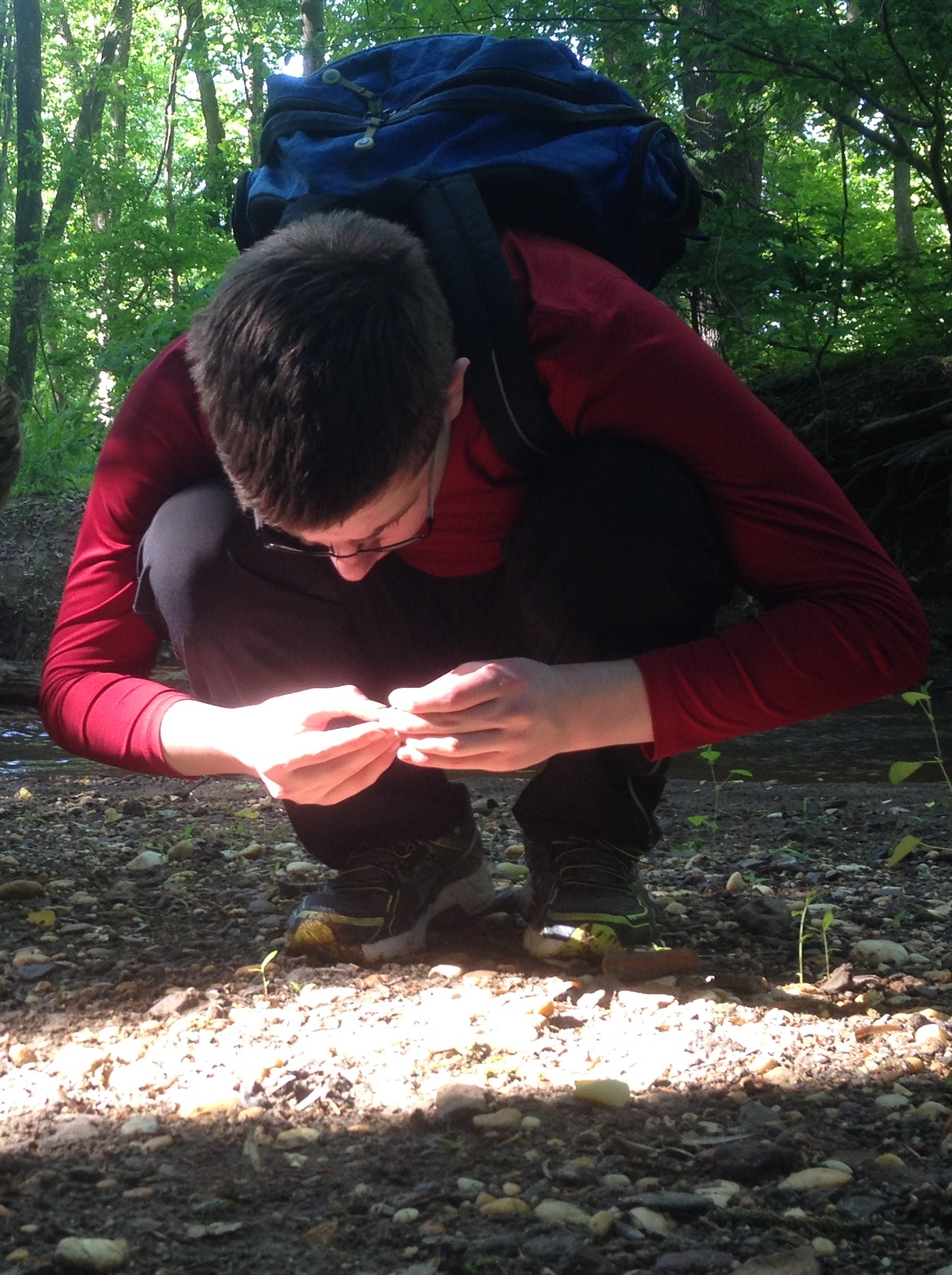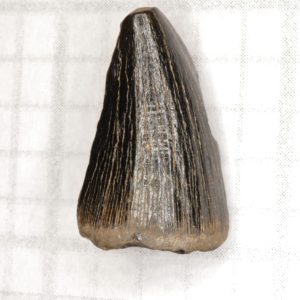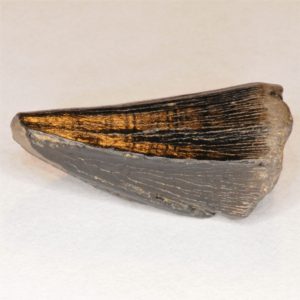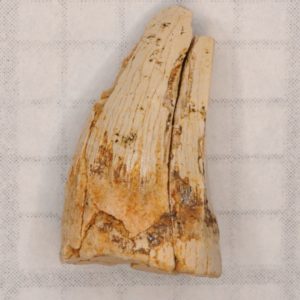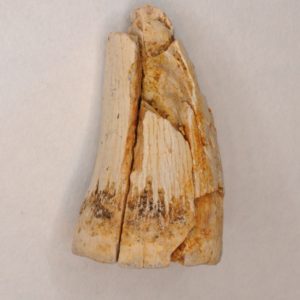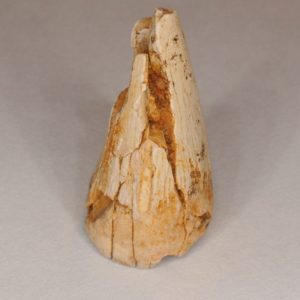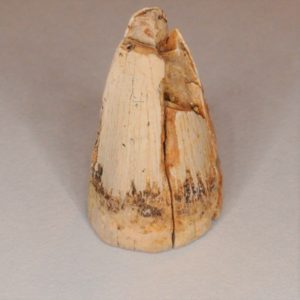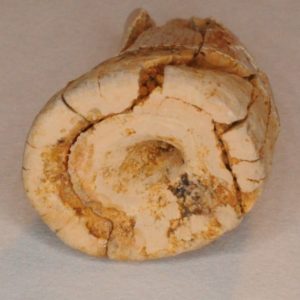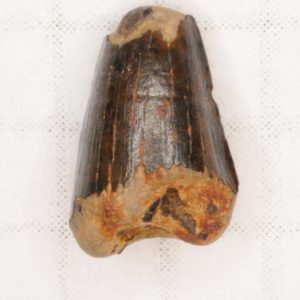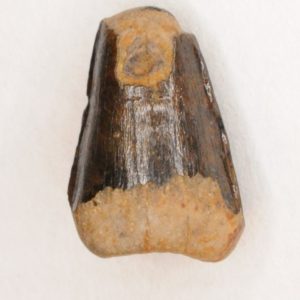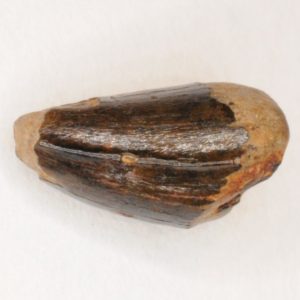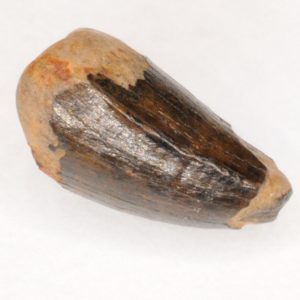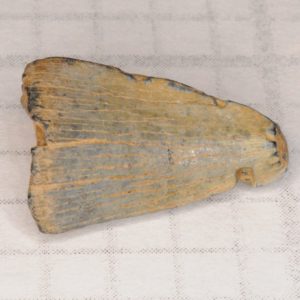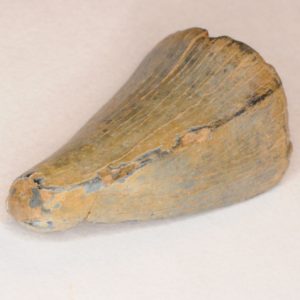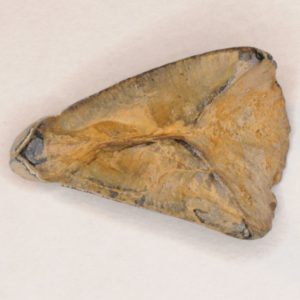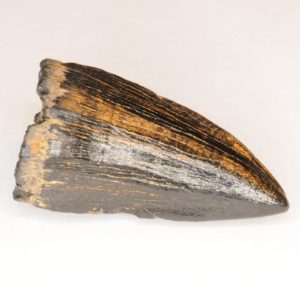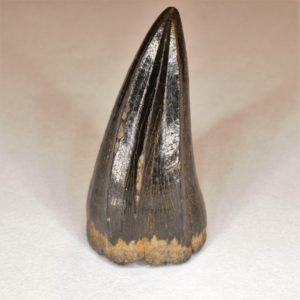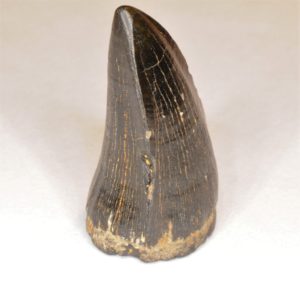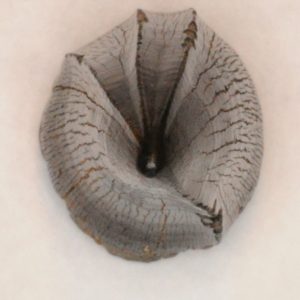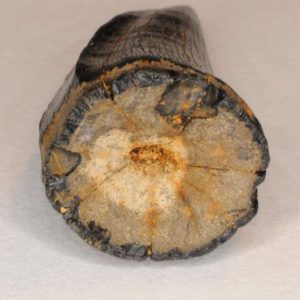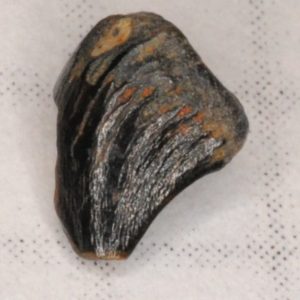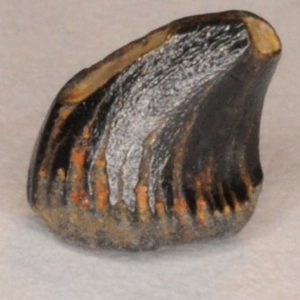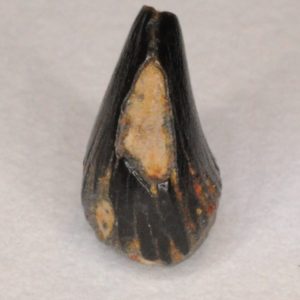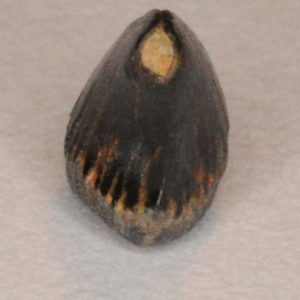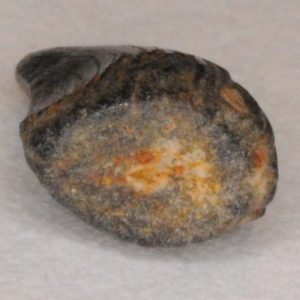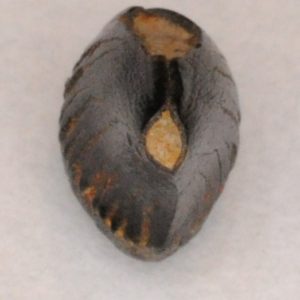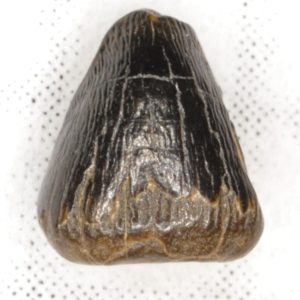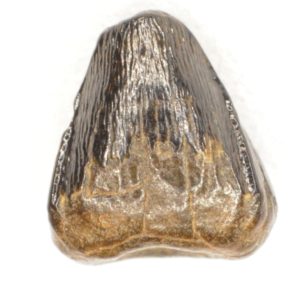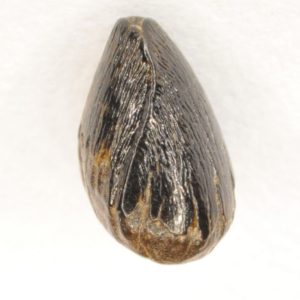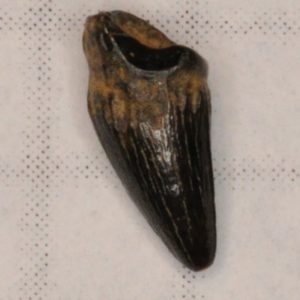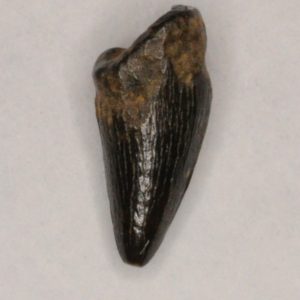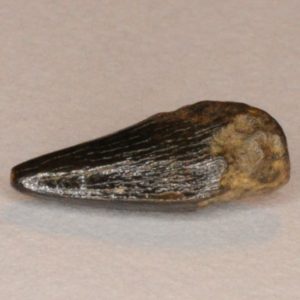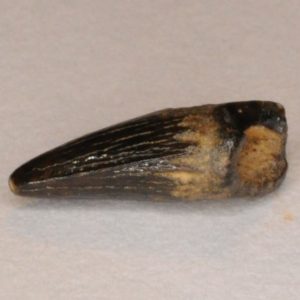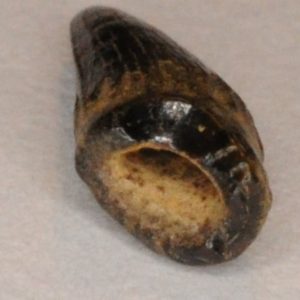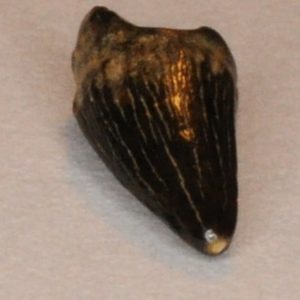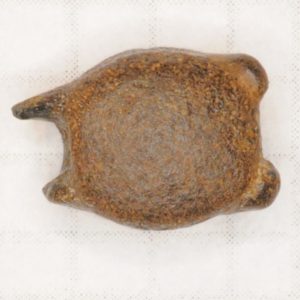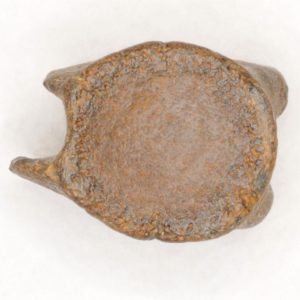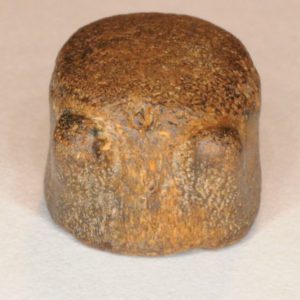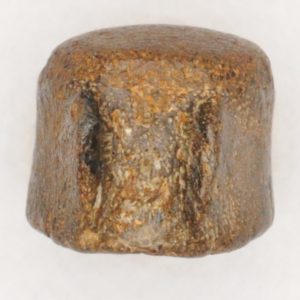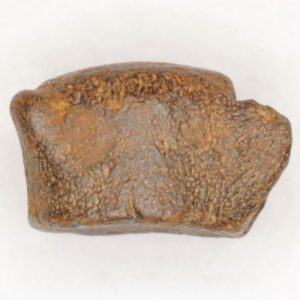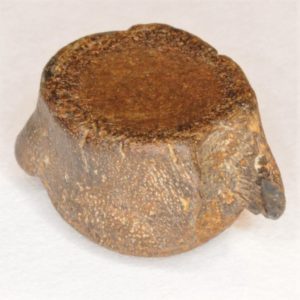NJfossils.com
"Fossils aren't a hobby, they're a lifestyle."Mosasaurs (Mosasauridae)
Age – Late Cretaceous; Commonality – uncommon; Size – teeth: 1/4-2+ inches, vertebrae: 3/4-3+ inches (centrums)
Mosasaurs possessed two types of teeth: they had the usual upper and lower jaw teeth, but they also had a second set of teeth on a separate jaw behind their maxilla, which are called pterygoid teeth. These specialized pterygoid teeth were used to help hold down prey that was struggling to help make swallowing easier. Most mosasaur teeth have an elliptical base that has a wide but shallow indentation, two prominent carinae (some positions may have only one), and smooth enamel with no serrations on the carinae. However, since reptile teeth are variable, there are a lot of different exceptions. Some mosasaur teeth (especially pterygoid teeth) have a circular base and may appear to have barely any basal indentation at all. Others may have irregular, ridged enamel near the tips of the teeth. Some teeth, especially some posteriors, can have microserrations on them. These serrations can make the tooth appear to be theropod.
Mosasaurs have an interesting way of tooth replacement. Instead of a new replacement tooth pushing an old one out from the bottom, a resorption pit forms where basically the new tooth swings into its upright position from its initial horizontal position, while the old tooth is discarded. This way of tooth replacement is found in snakes, making mosasaurs their distant relatives.
Mosasaur vertebrae are distinct when complete. They have a slightly concave anterior face and slightly convex posterior face. They can vary greatly in appearance depending on the position they came from (thoracic vertebrae differ from terminal vertebrae in size and process attachment, for example).
Other mosasaur bones are pretty rare.
Teeth
This is a posterior tooth.
EDIT: Croc tooth. Will be moved. This one has some interesting sinusoid carinae.
